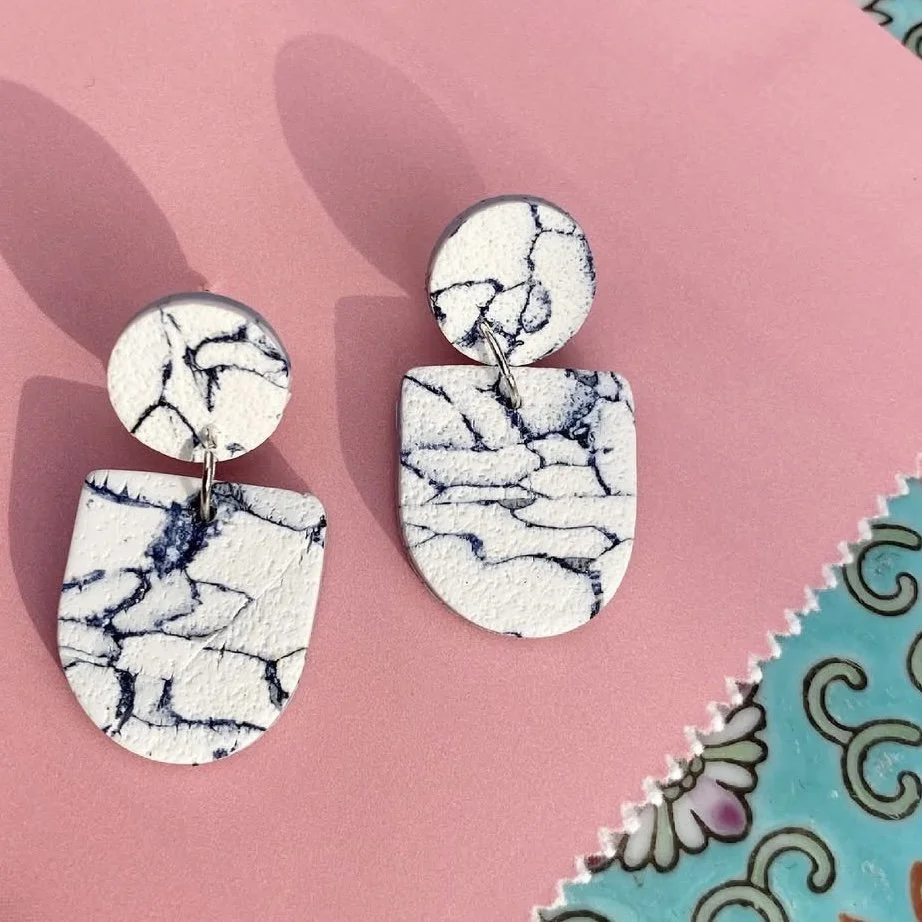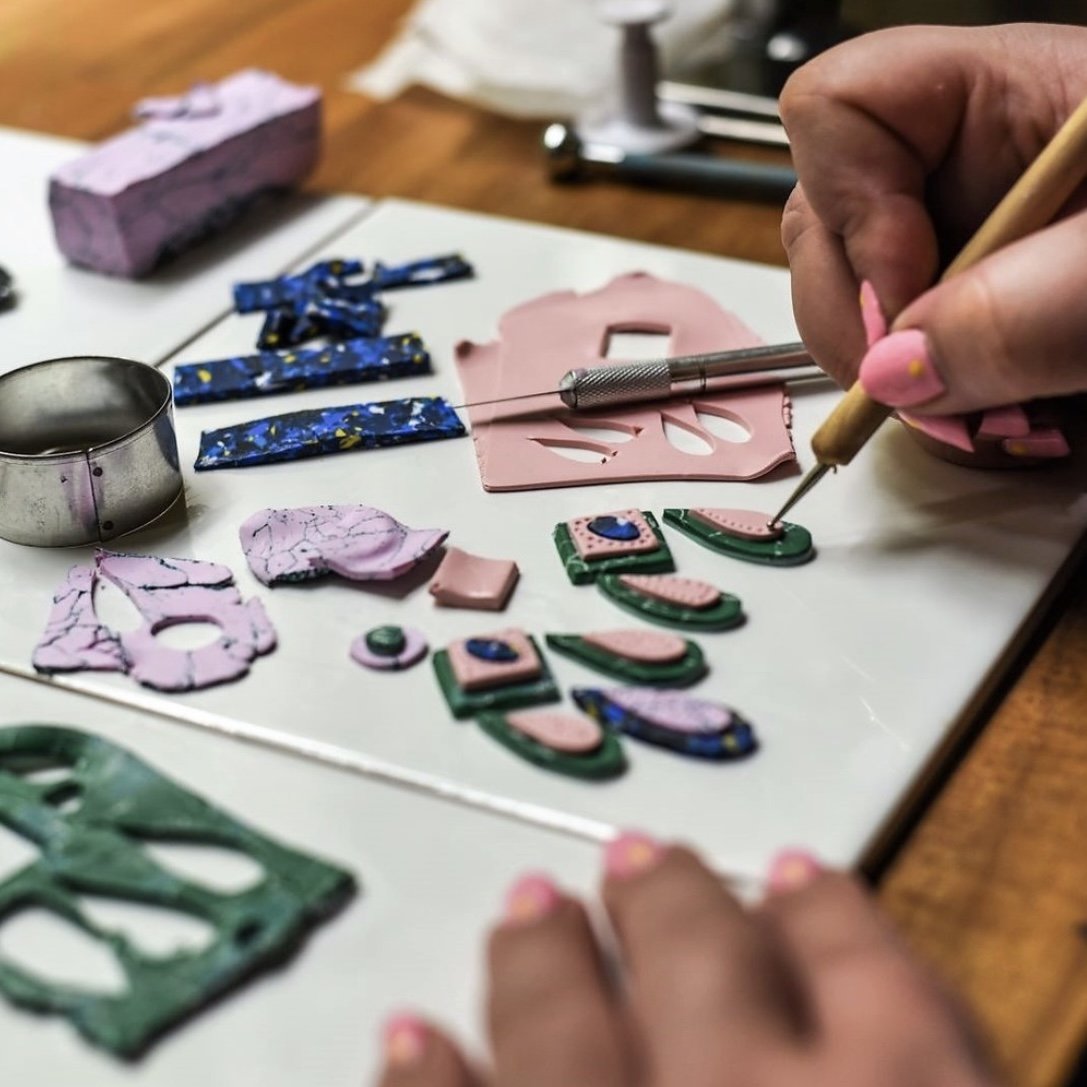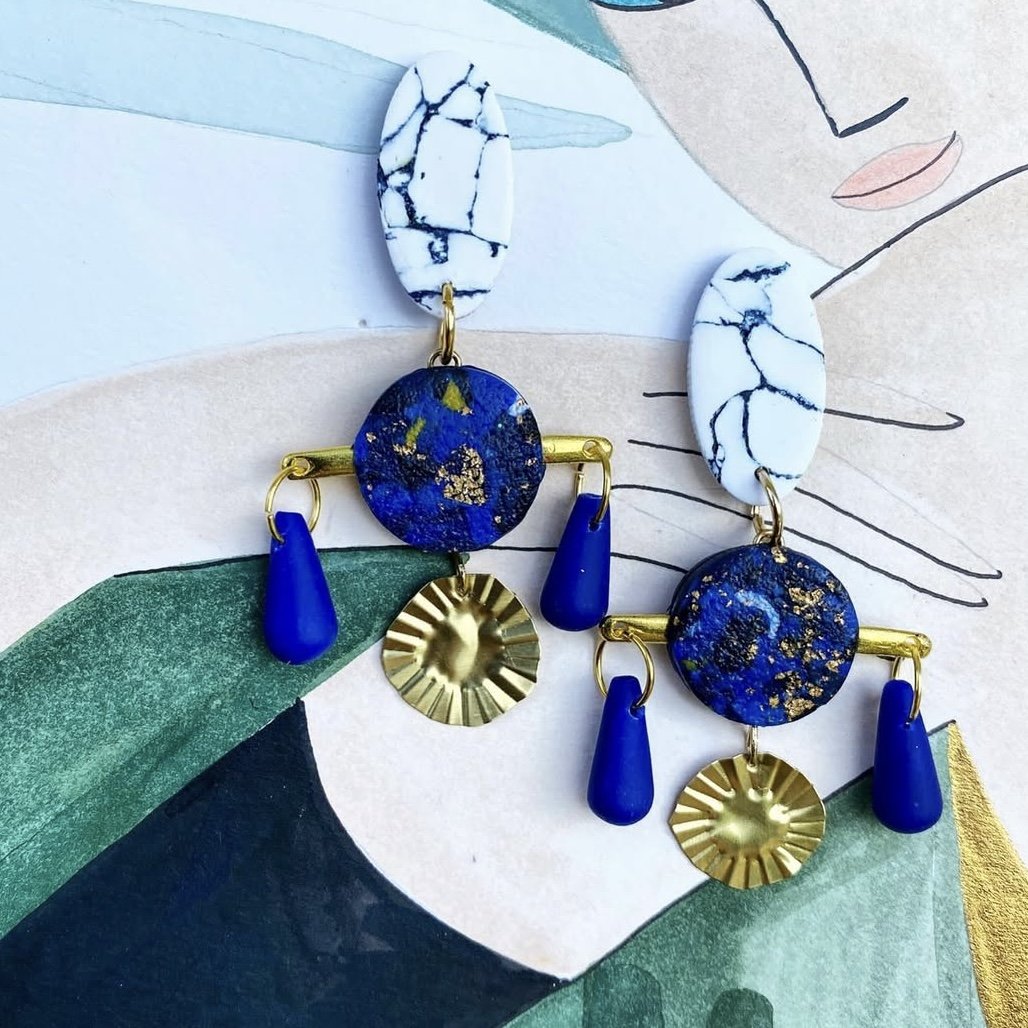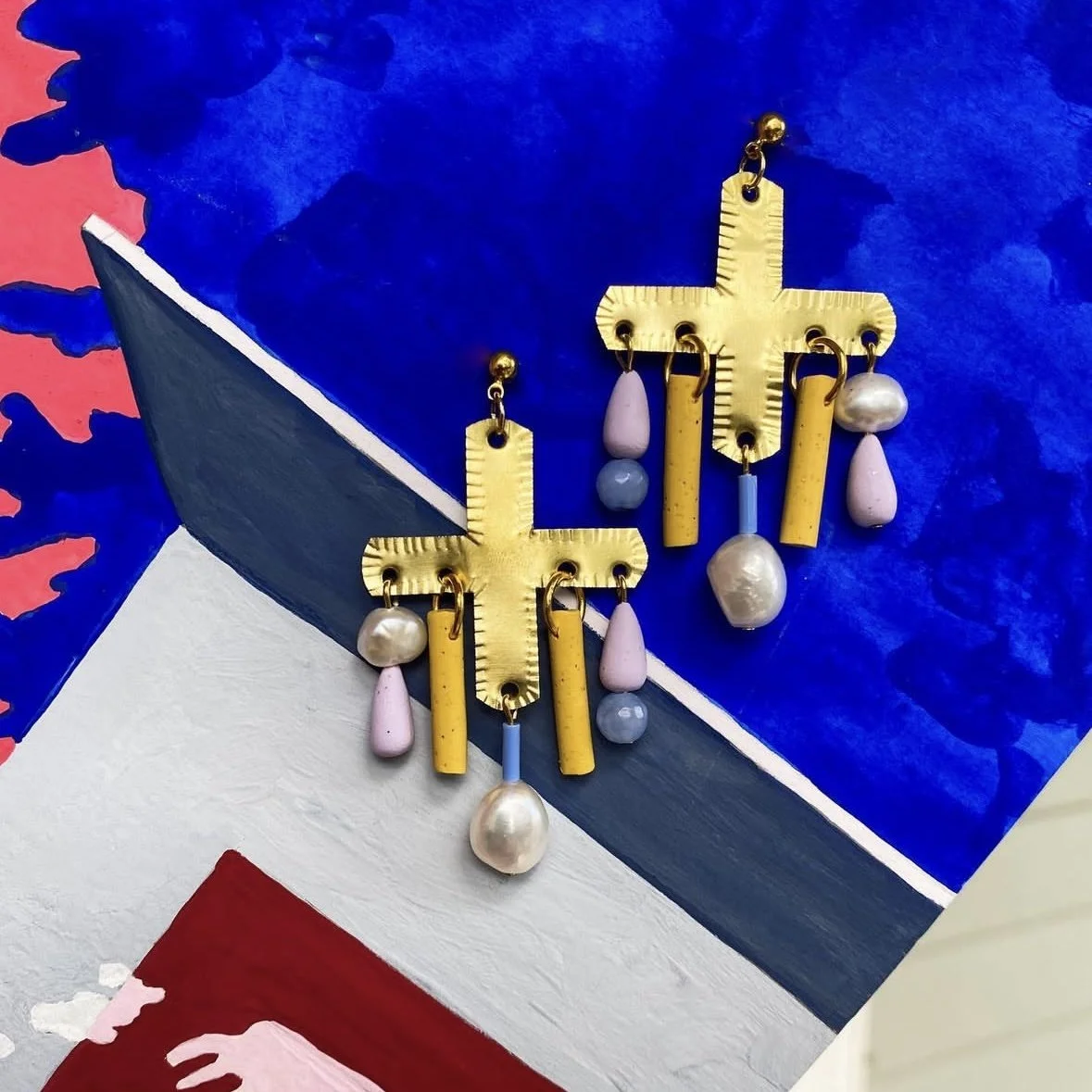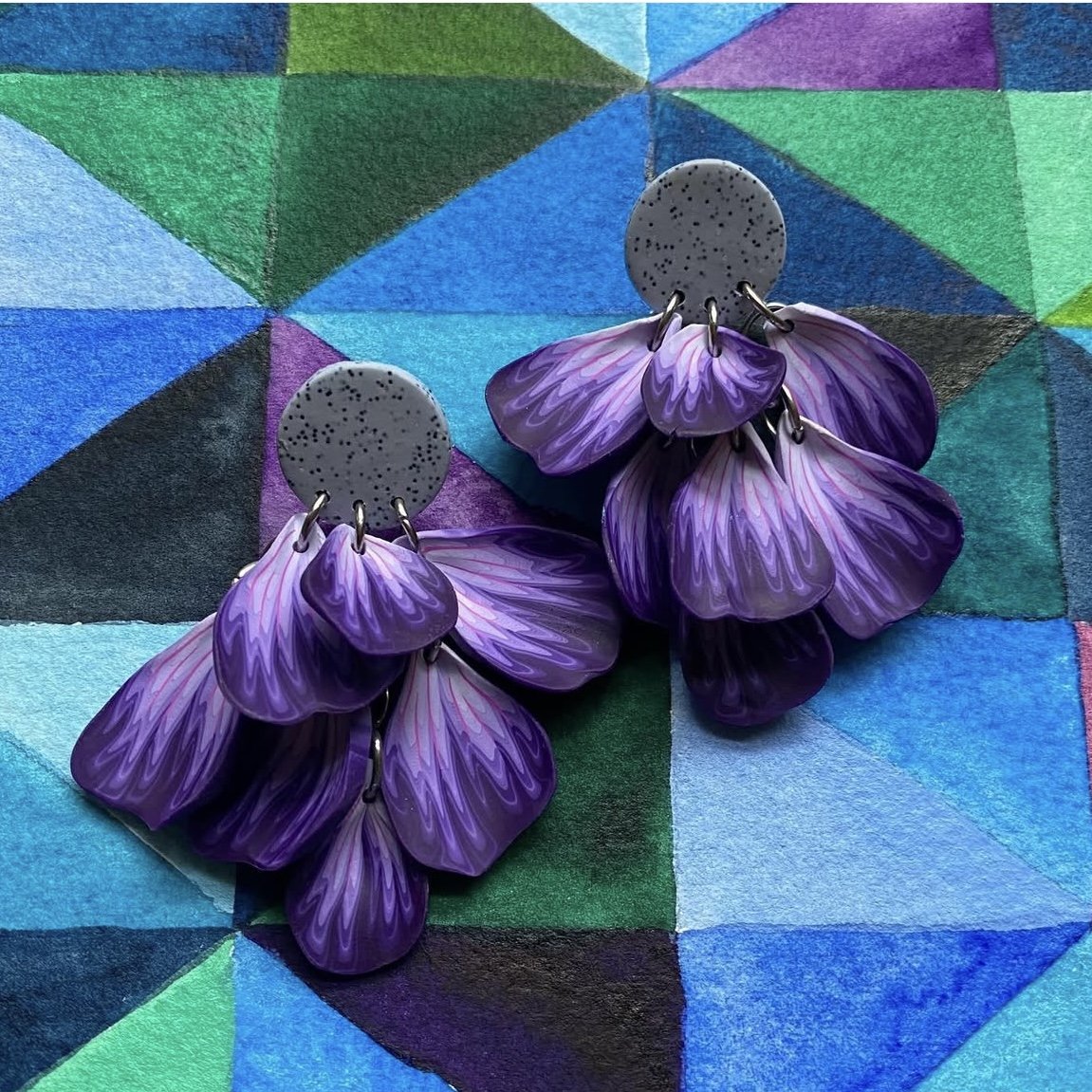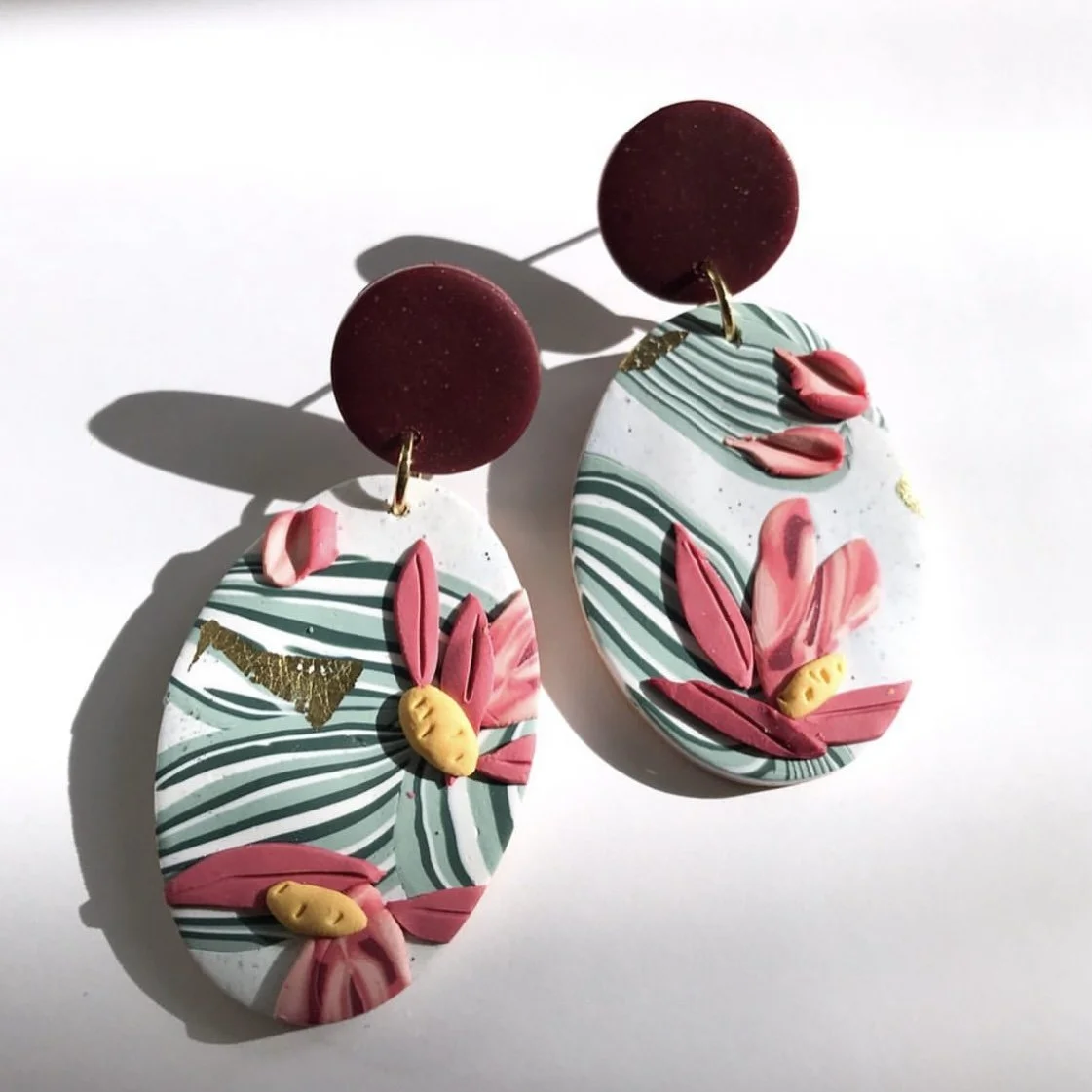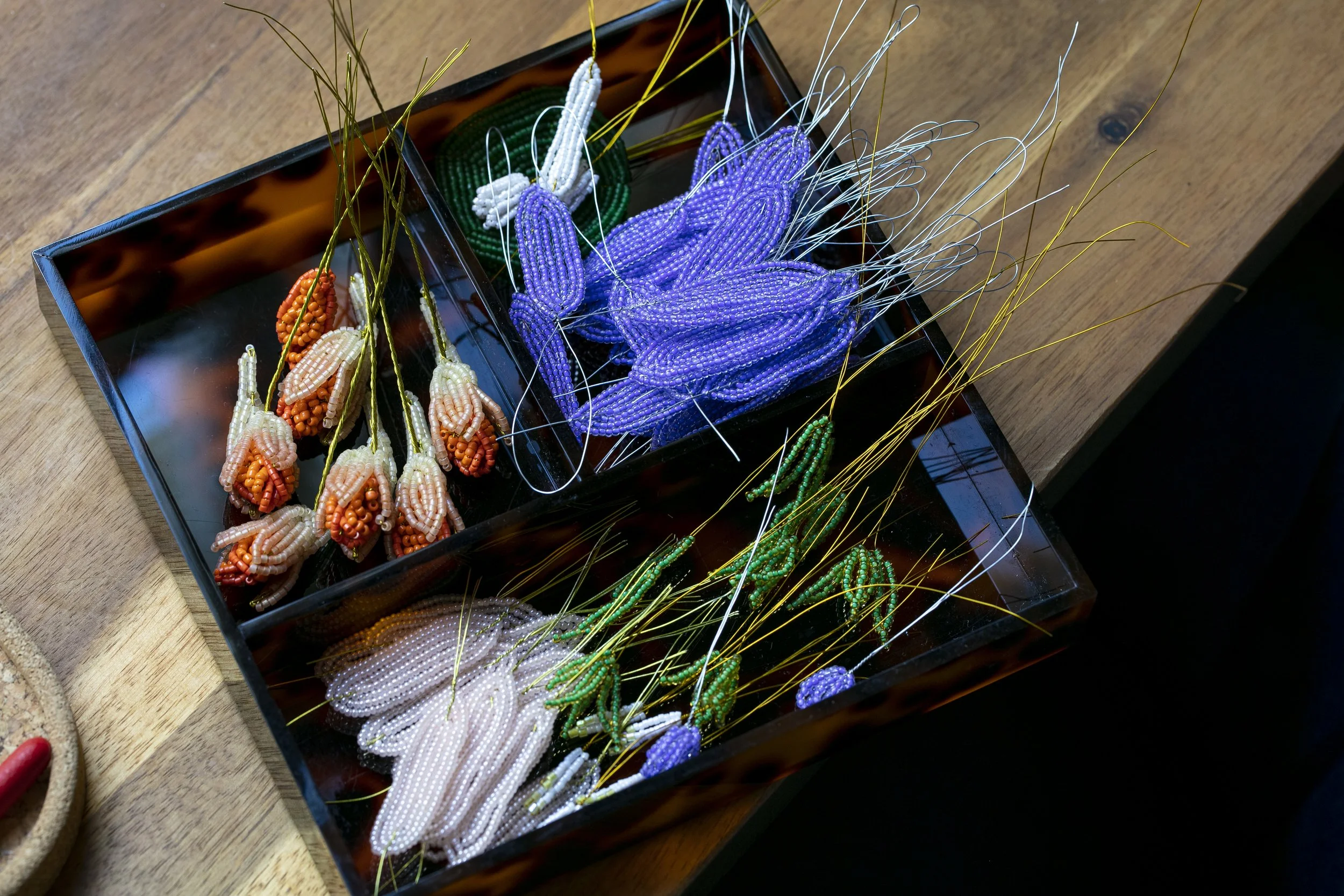The Story of Hark Handmade
I once found myself sitting in a legal lecture theatre, surrounded by heavy textbooks and serious faces, wondering how I’d ended up there when all I really wanted was a pair of pliers and a spool of wire. That moment felt like a pivot. Though I graduated from law, my heart beat to a different rhythm — a rhythm made of hand-craft, materials, colour and nature.
My creative journey wasn’t born yesterday. I come from a family where art and craft were everyday language. My grandmother was a ceramicist, and I grew up immersed in a world of drawing, sewing, playing with wool and always being encouraged to do so. It was inevitable I would like to pursue art and design, but I also needed a “real job” so I studied law and have worked in Marketing and strategy ever since.
Hark Handmade began quietly, almost as a side project. I started by making bold earrings, experimenting with form, colour and jewellery-making technique. The name ‘Hark’ came about one evening at a barbecue when a complete stranger suggested it — “Hark sounds ear-related” — and I thought: why not? The brand felt playful and unexpected, which exactly suited where I was at. It was in the thick of the polymer clay obsession. Markets followed. Workshops followed. I taught jewellery making to hundreds of people, loved the communal energy, loved the rhythm of beads and wire, loved the hands-on process.
Above: Early Hark Handmade Polymer clay jewellery. Second photo credit: Amanda Billing.
Everything shifted during the pandemic. Markets cancelled, workshops paused. It suddenly became possible to lean deeper, slower, more intensely because I had a lot more time on my hands. I grew ever more sorry for putting so much polymer clay into the world…the microplastics!!! I can hardly bear to think about it still. In the silence of having nowhere to go, I stumbled upon images of 19th-century French beaded flower wreaths — memorials created from beads when natural flowers were not available. I was hypnotised, I had the materials, and off I went.
Early 20th century French Immortelle via Antiques Boutique
Flowers have always fascinated me — their form, colour, fragility, meaning. But when I discovered the world of beaded floral work, a new landscape opened. I decided to give the practice a second life. What if flowers could be made to bloom forever? I can preserve that whisper of ephemerality in glass, wire and beads.
I collect and study botanical reference books, vintage imagery, real plants. I count petals. I measure curves. I experiment. Beads become petals, wire becomes stem. I love working with Japanese and Czech seed beads for their subtle finishes — matte for velvety roses, transparent for petals backlit by sunlight. Each piece is painstaking; even a “simple” daisy might take hours; a complex bloom might take weeks.
The process is slow and meditative. It is craft and sculpture, jewellery and botanical form.
Photo: Babiche Martens for Your Home & Garden
Now, I imagine Hark Handmade as a space where botanical sculpture meets design, where objects are rich in story and material. I want each piece to feel like a small monument to memory, presence and nature. The goal is not to mass-produce or trend-chase, but to build work that invites contemplation and lasts. It’s about the work of preserving that moment of bloom, holding it in time, and offering it to someone who will value it for its story as much as its form.

